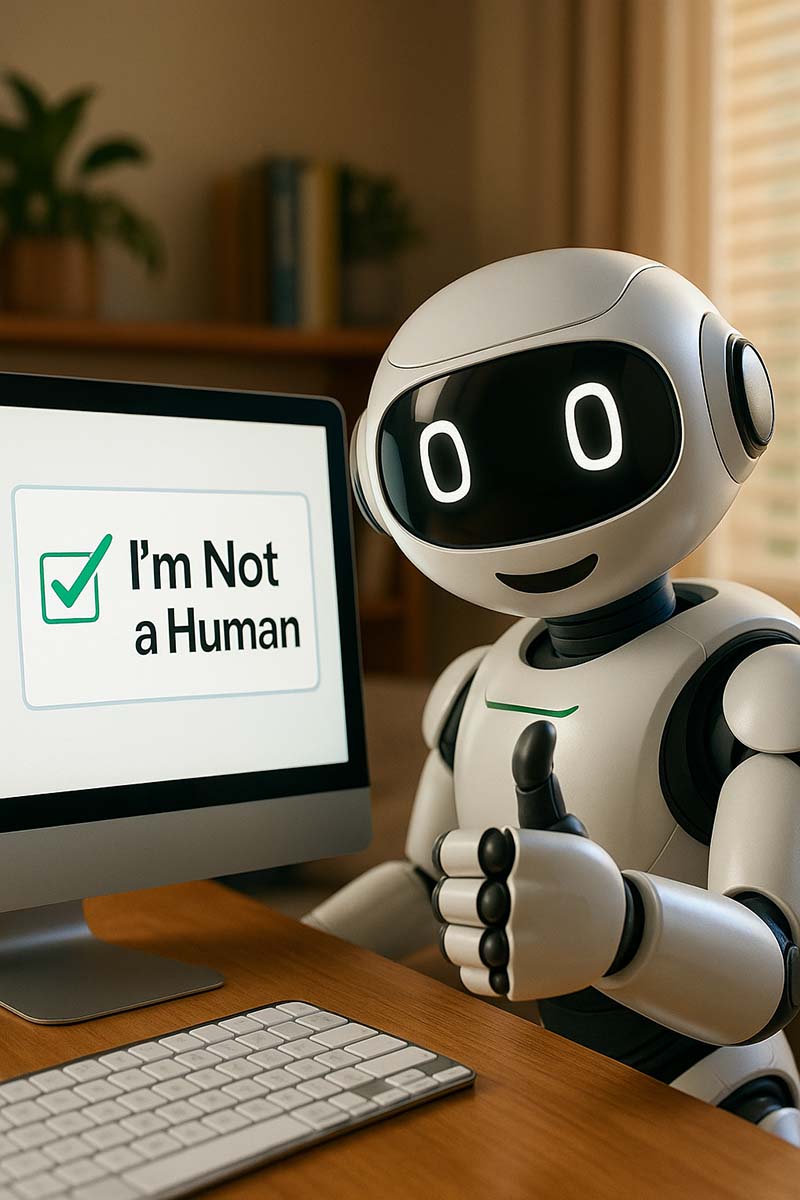Your Website Will Soon Stop Being for Customers, and Start Being for AIs
The Change No One Saw Coming.
Website in the age of AI. The history of the internet is marked by transformations that at the time seemed invisible but ultimately reshaped how businesses present themselves to the world. Websites began as simple digital showcases, then turned into the battleground of SEO, and later became platforms designed to survive in a mobile-first ecosystem where user experience dictated the rules.
Today we are witnessing a new silent transition: websites are no longer created only to be visited by customers, but to be interpreted, indexed, and prioritized by artificial intelligence. A reality many still don’t perceive, but one that is already reshaping the foundations of digital presence.

A Brief Historical Evolution of Websites
Each stage of the internet has forced businesses to rethink their digital strategies:
-
First era (1990s): Websites were static showcases, lines of HTML that worked like online brochures. Not very attractive, but revolutionary in their ability to “be present” on the web.
-
Second era (2000s): With the rise of Google, SEO became the discipline that determined who existed and who faded into obscurity. Websites stopped being designed only for customers and began to be built with search engines in mind.
-
Third era (2010s): The mobile-first revolution forced a complete redesign of the web. It was no longer enough to be online; usability, speed, and a coherent user experience on smartphones became essential.
-
Fourth era (2020s–2025): We are entering the era of AI. Websites are now raw material for generative models that answer questions, recommend services, and shape purchasing decisions for millions of users.
As Tim Berners-Lee, creator of the World Wide Web, warned: “The web should be a universal space for sharing information.” Today, that universality is no longer expressed only in browsers; it is artificial intelligence that feeds on it to deliver answers.
Websites in the Age of AI
People’s digital behavior is shifting. We spend less time in browsers and more in mobile apps, social networks, and, most recently, AI assistants. We ask a model, expect an answer, and trust this process to save us the friction of endless tabs and links.
This means a solid website is no longer just a storefront for human clients, but a strategic repository of information that must be readable and prioritized by artificial intelligence. Having a website in the age of AI is accepting that your immediate audience is no longer only people, but also the algorithms filtering and mediating between your business and them.
AI-Optimized Content = Digital Presence
If SEO was the key in the age of Google, we are now entering a stage where optimization is geared toward artificial intelligence. It’s not about stuffing a site with keywords but building AI-optimized content: semantic, structured, relevant, and authoritative.
This means producing articles, descriptions, and narratives that not only inform but also provide context, hierarchy, and clarity. Algorithms interpret patterns: topical relevance, consistency of voice, coherence between titles and body. In practice, your digital presence will depend on how much value an AI can extract from your site when answering a query.
In other words, the future of your reputation will not be decided only in a client’s mind but in how an AI model categorizes your relevance compared to others.
Where the IAs are getting their info from?
The New Competition: Not Against Businesses, but Against Algorithms
Competition is no longer linear. You used to compete against similar businesses; now you compete against a new filter—artificial intelligence. If your website isn’t designed to stand out in this ecosystem, no matter how good your product is, you simply won’t show up in the conversation.
Even more revealing is that the sources AIs feed on are no longer the traditional ones. Reddit, Bing, specialized forums, and online communities are gaining weight in shaping answers. The information ecosystem is diversifying, and only those who participate in multiple spaces will have real presence.
As a digital philosopher might say: we’ve entered a space where the only certainty is uncertainty. The history of the internet itself proves one thing—if we can be sure of anything, it’s that nothing is certain.
Digital Presence in Uncertain Times
In this scenario, digital presence cannot rely on a single channel. Companies seeking continuity must diversify their points of contact and consolidate a website that acts as an anchor of credibility.
Modern marketing is no longer measured only in clicks or likes, but in the ability to be present when an AI builds an answer. Kotler, the father of modern marketing, reminded us that “visibility is the foundation of all positioning.” Today, that visibility depends on ensuring your business is included among the sources algorithms deem trustworthy.
Leaving out channels—whether it’s a blog, verified reviews, or secondary platforms—means losing opportunities in the new attention economy. The key lies in designing a holistic digital presence that serves both the human user and the artificial intelligences mediating between them and your brand.
Prepare Today for an Uncertain Future
We don’t know if this shift will be a natural evolution of the web or a radical rupture. What we do know is that it’s already happening. The question is not whether websites will be read by AIs, but whether your website will be relevant enough to be part of those answers.
The future is unwritten, but your digital presence can make all the difference. And at BCOMBRAND, we can help ensure your website in the age of AI is prepared for this new reality: solid, optimized, and able to stand out in a world where customers no longer search—they receive what AI decides to show them.



